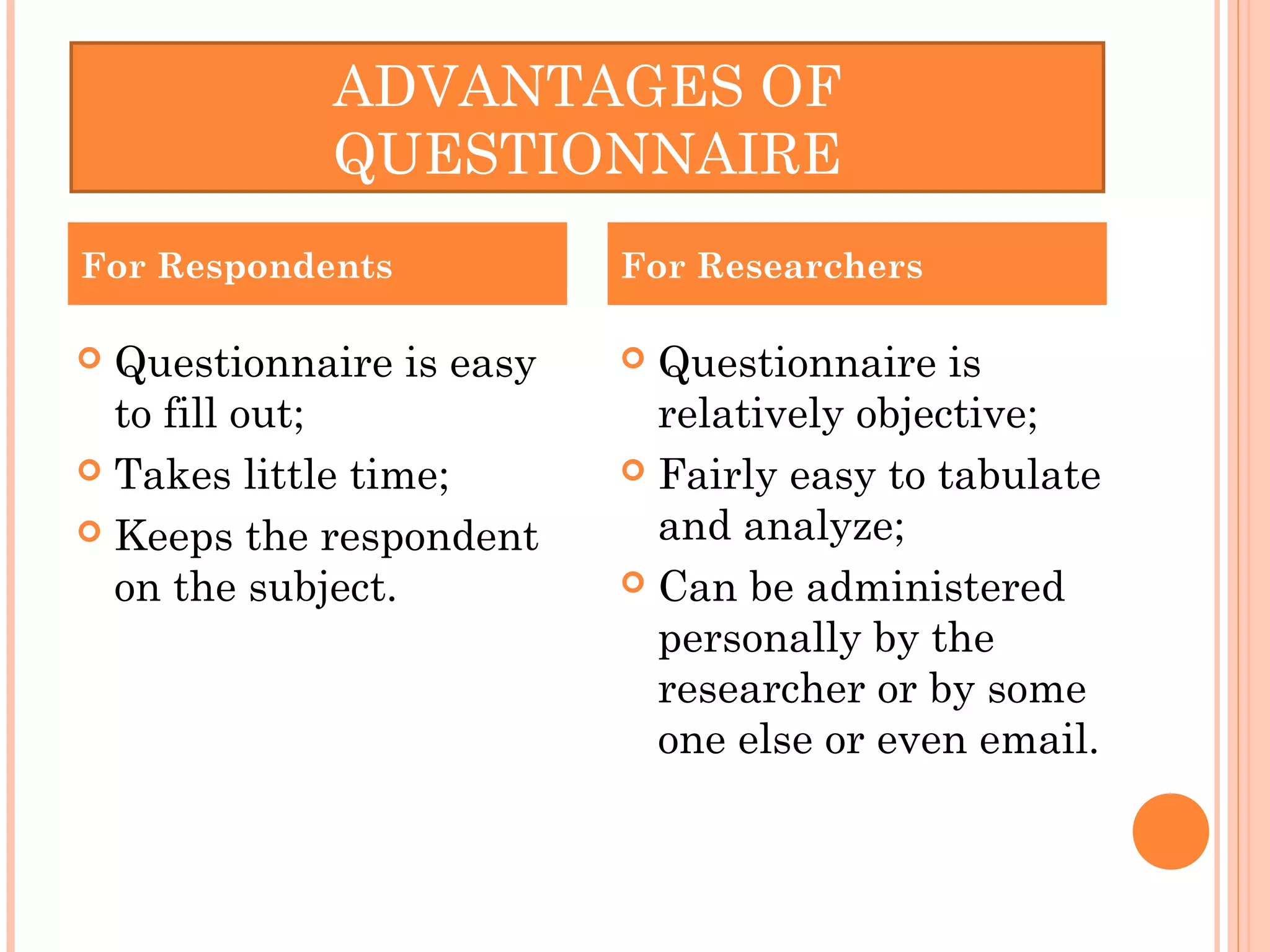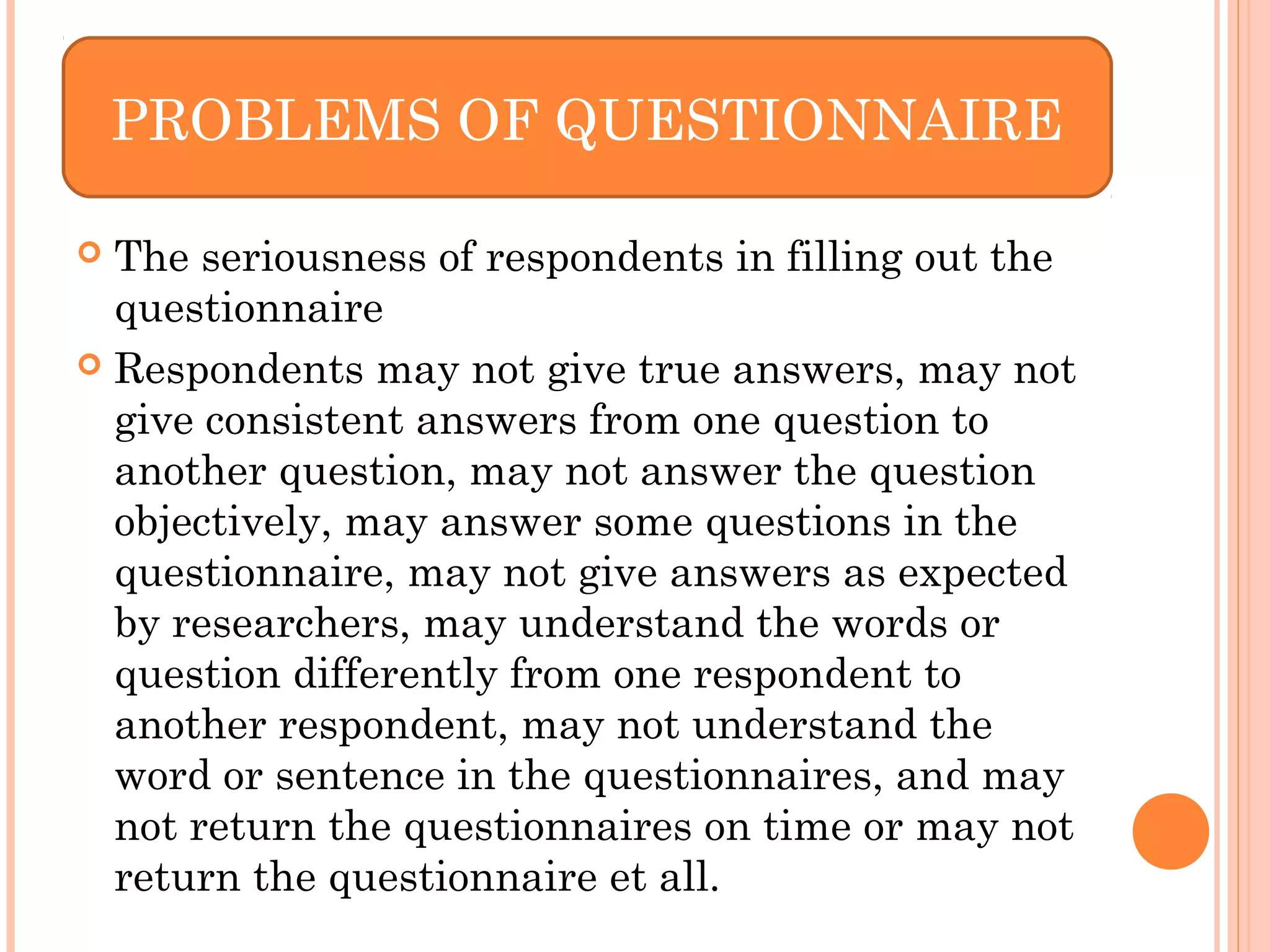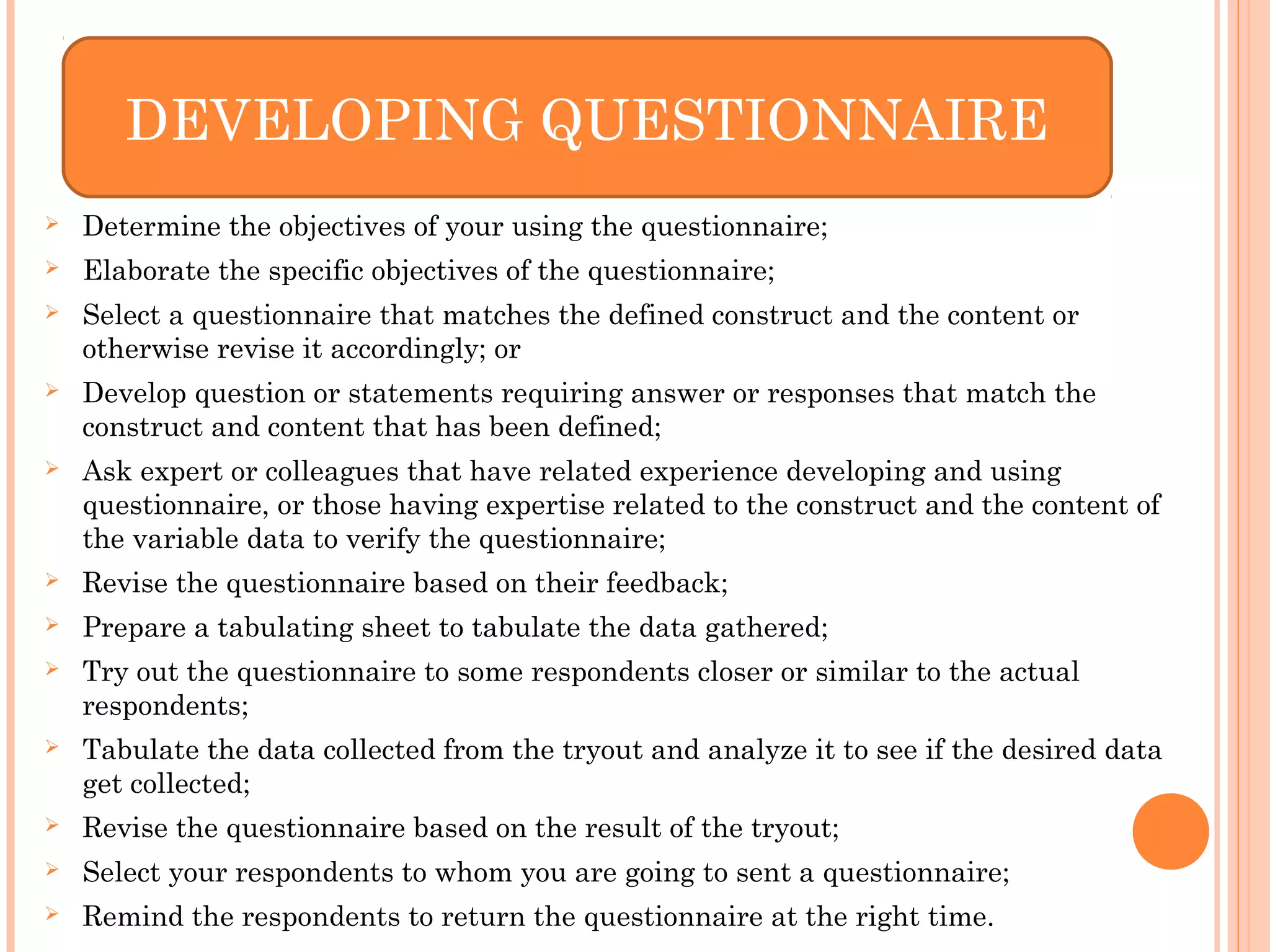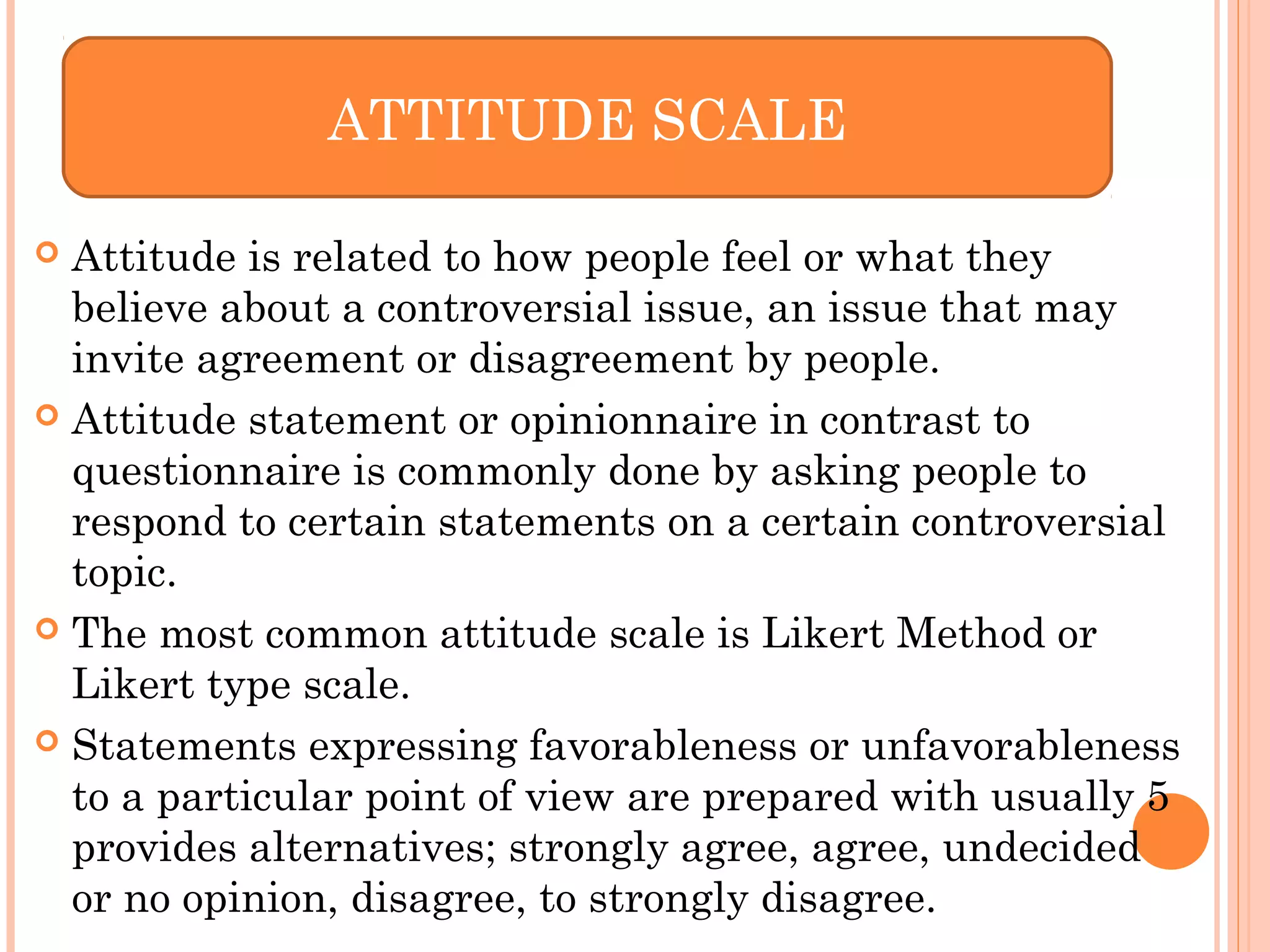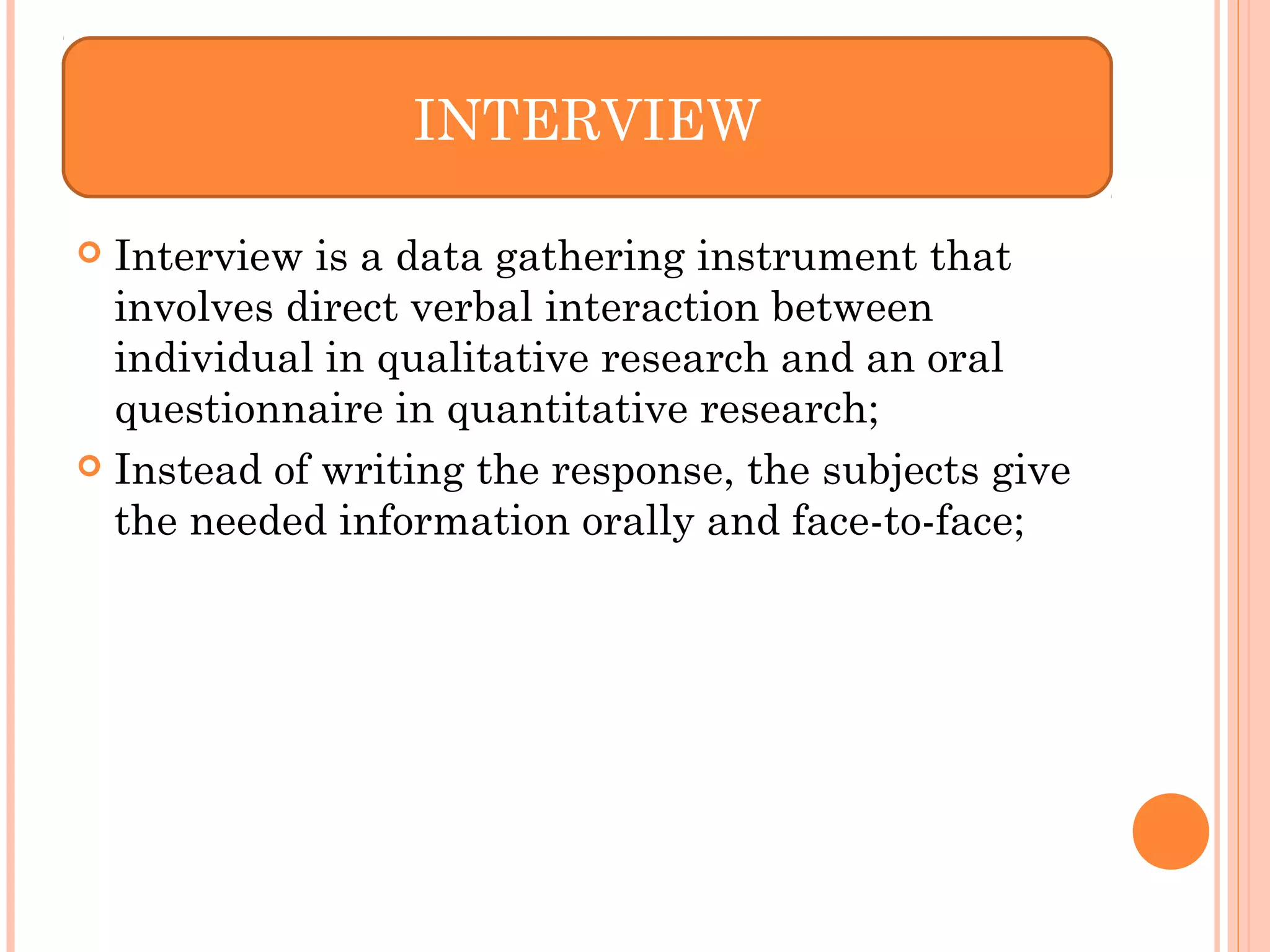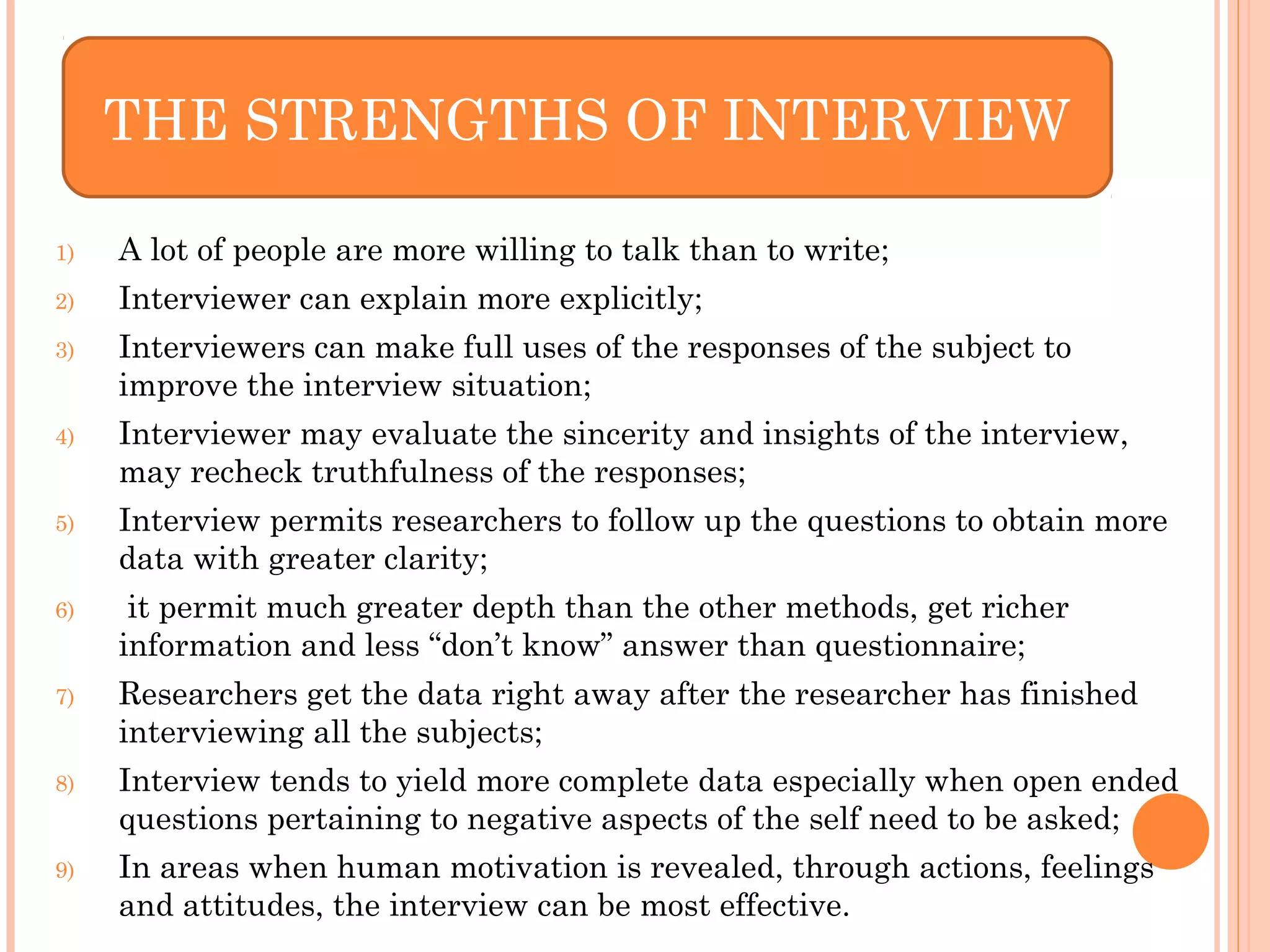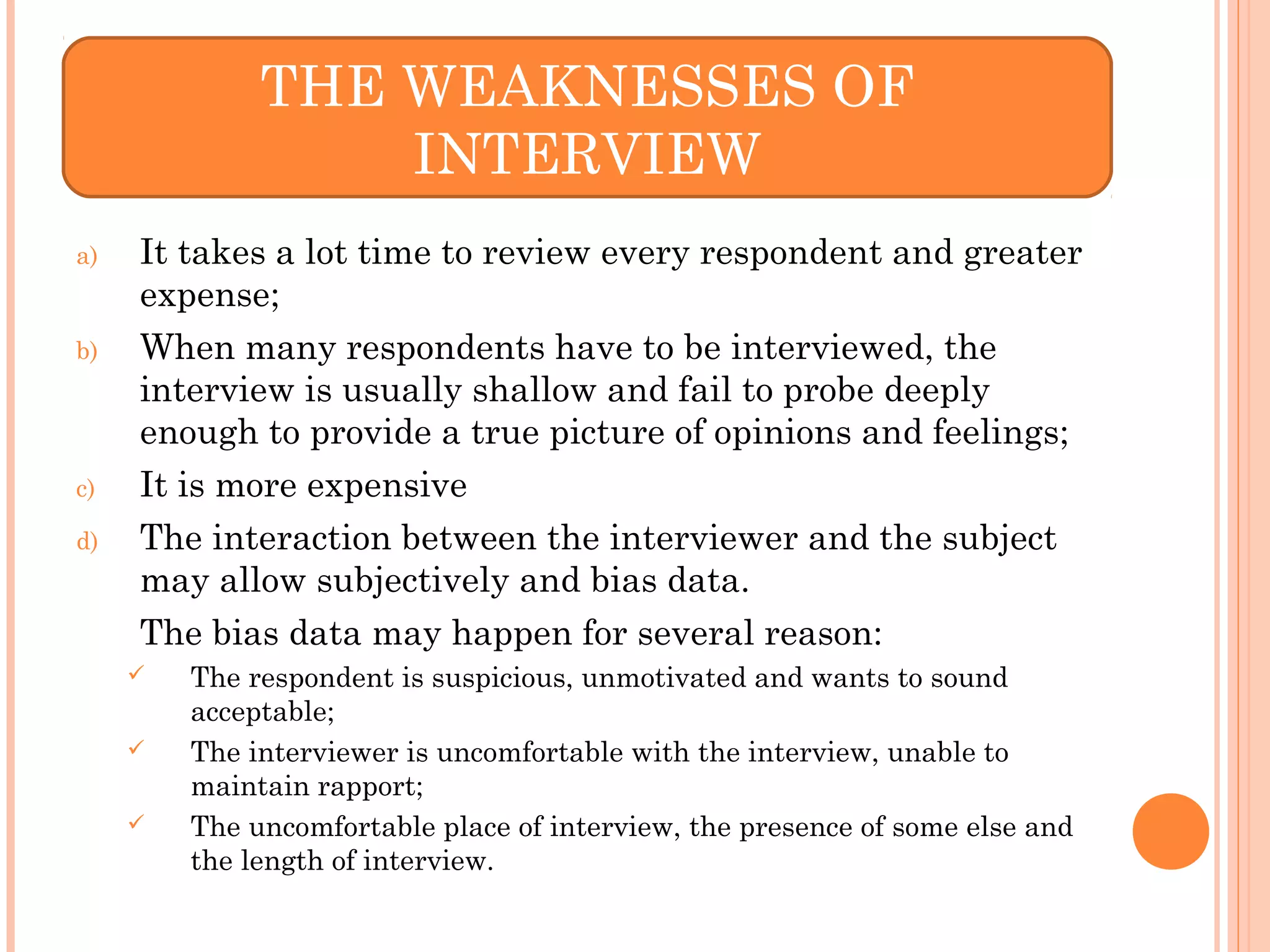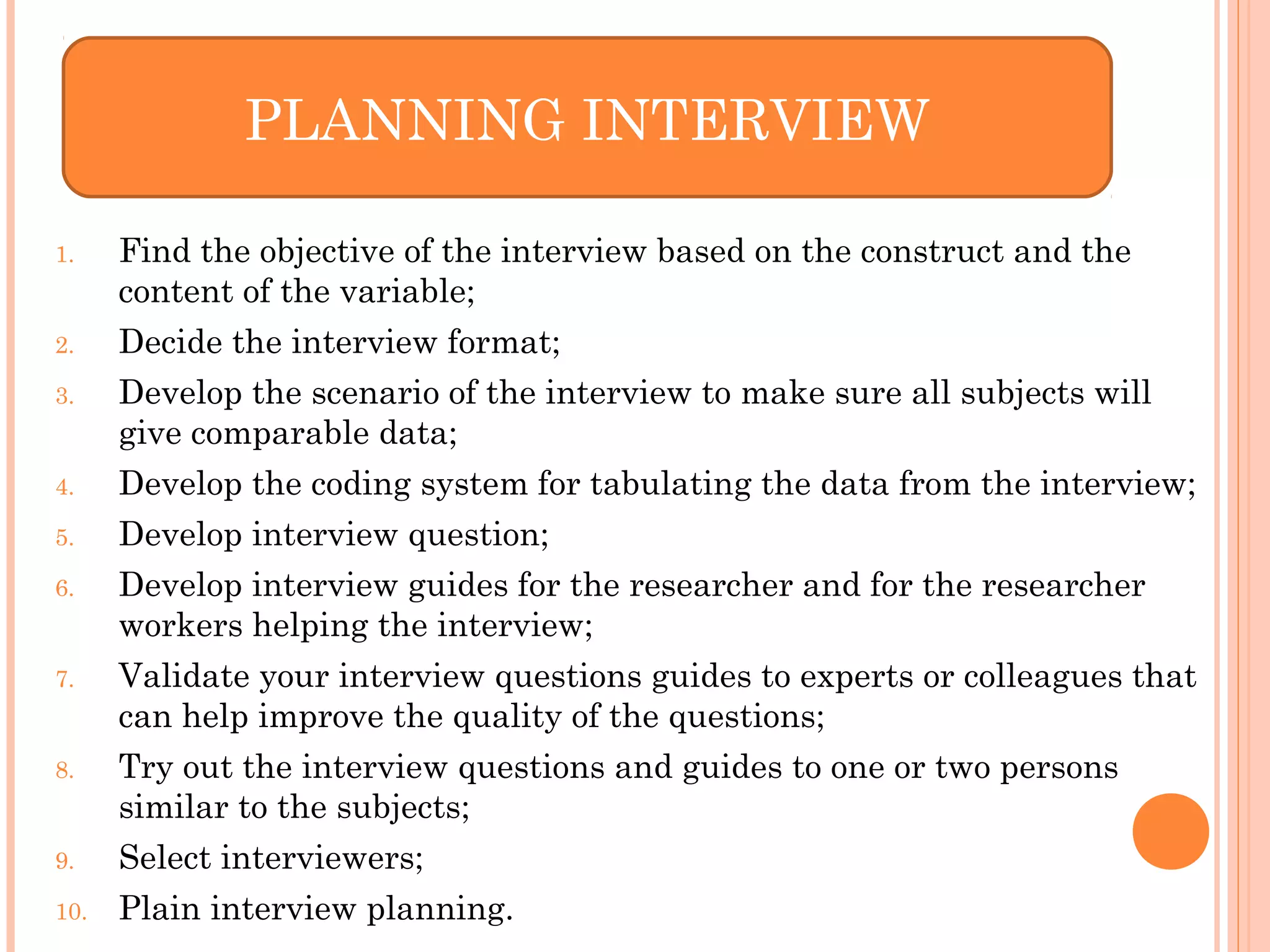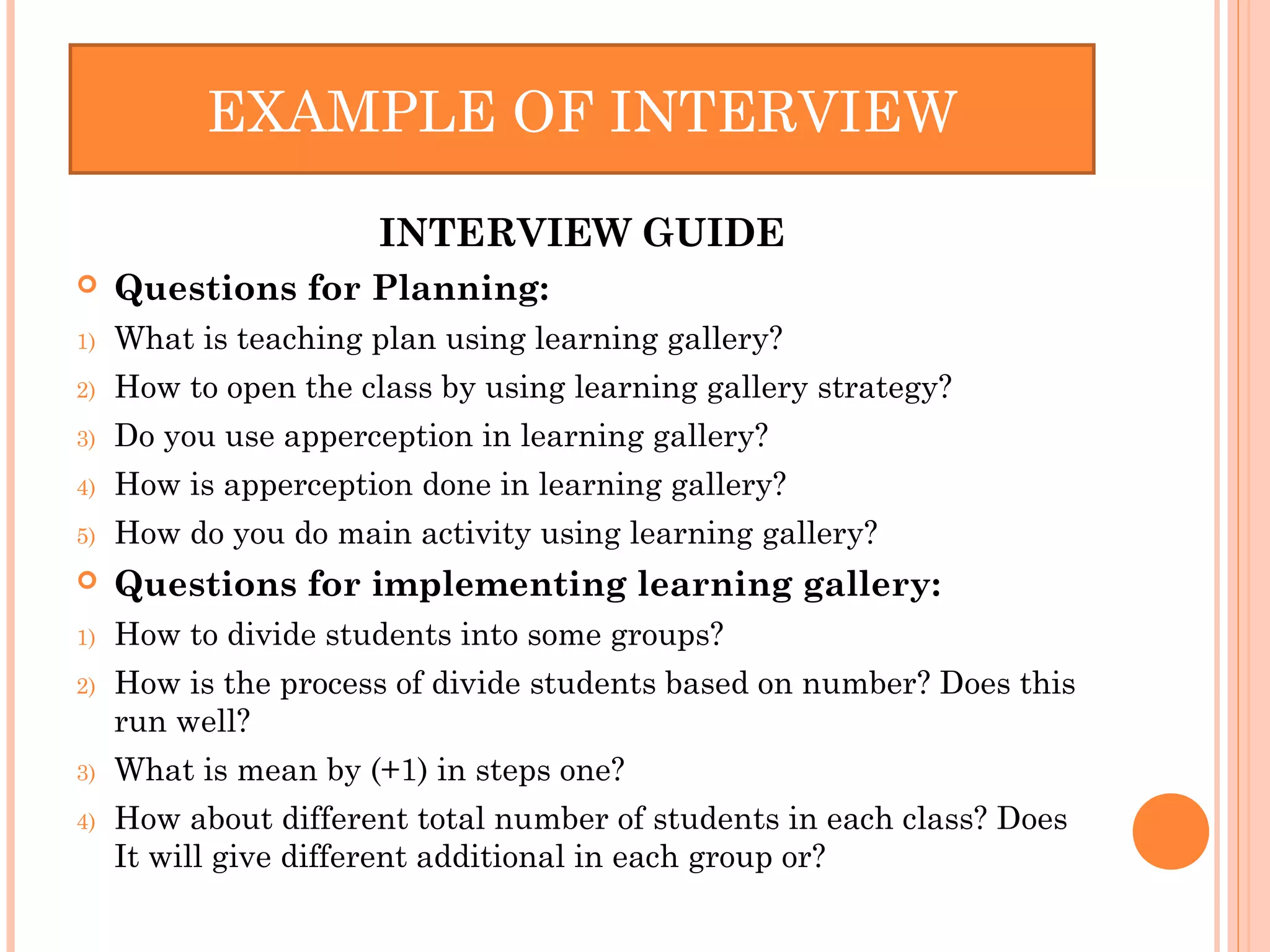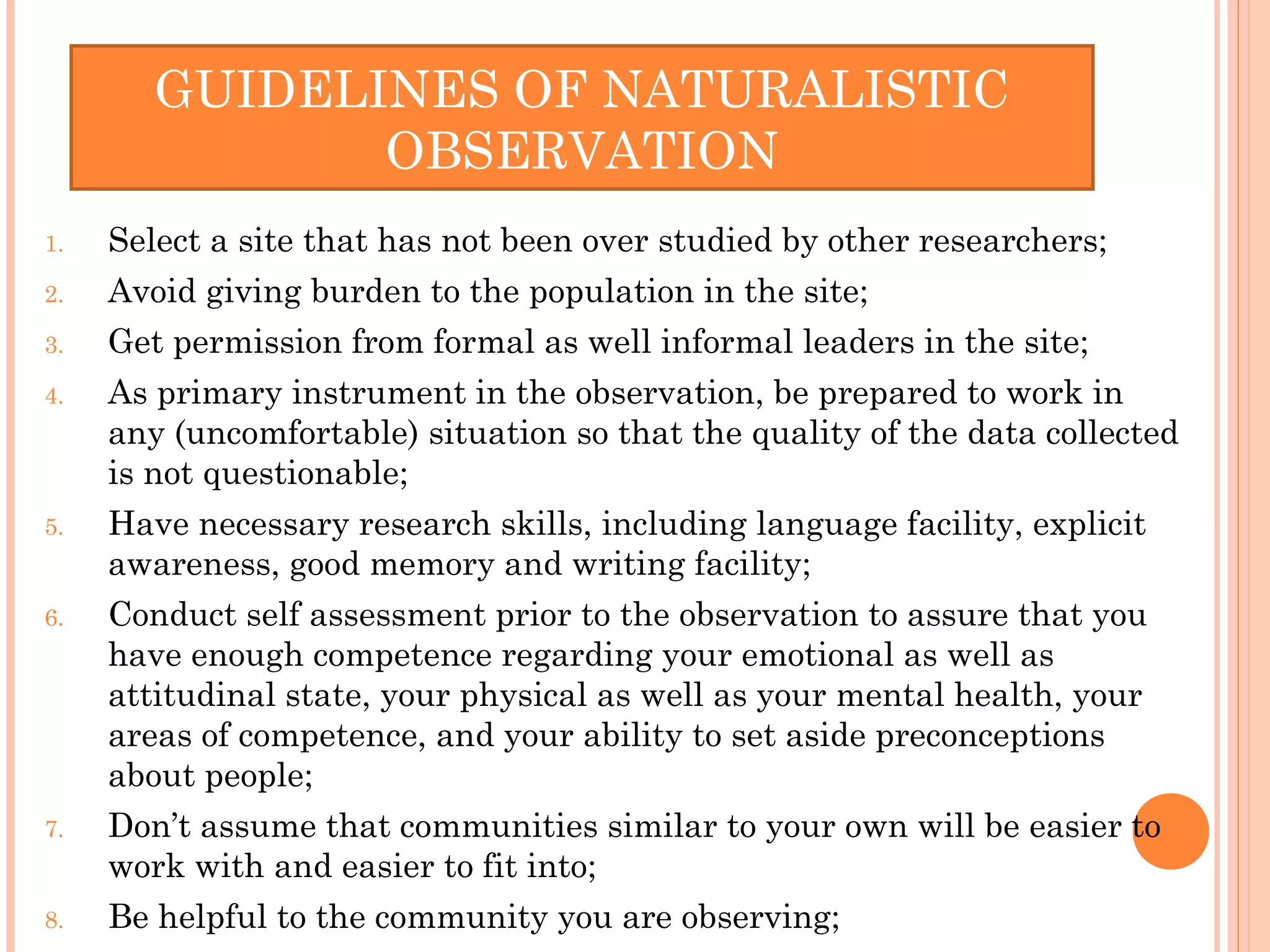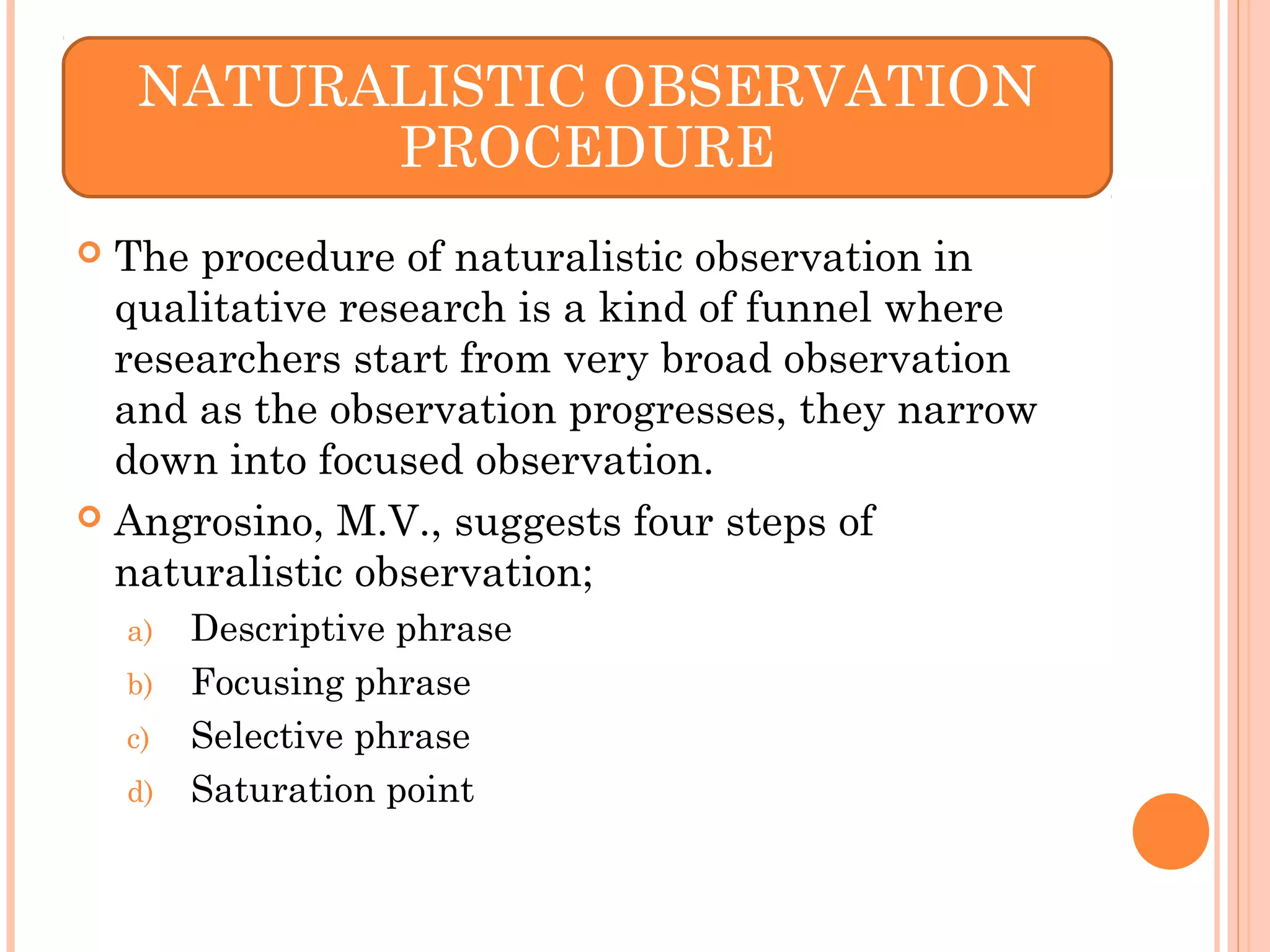This document discusses various research instruments used for data collection, including questionnaires, attitude scales, interviews, and naturalistic observation. Questionnaires can be used to gather factual information or opinions through closed-form or open-form questions. Attitude scales, such as the Likert scale, are used to assess attitudes on controversial topics. Interviews allow researchers to ask follow-up questions for clarity and depth. Naturalistic observation involves observing people in their natural settings to understand their interactions and cultural activities. Guidelines are provided for developing each of these instruments and conducting naturalistic observation to collect high-quality data.


